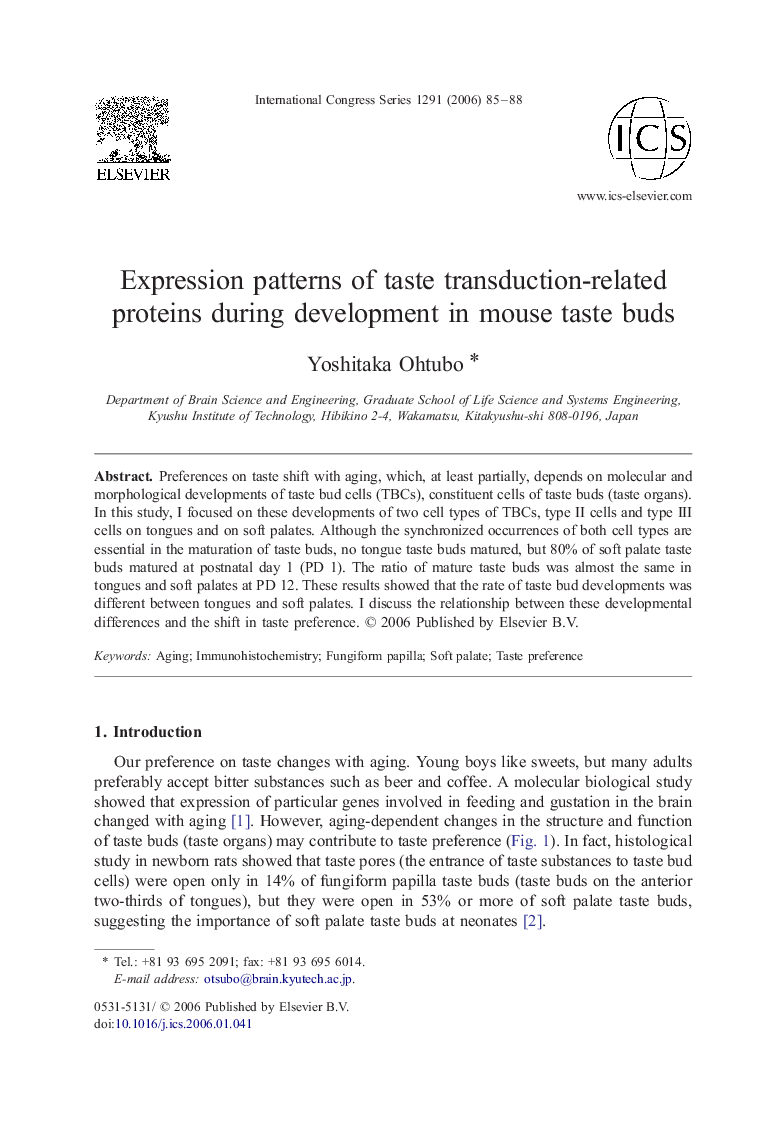| Article ID | Journal | Published Year | Pages | File Type |
|---|---|---|---|---|
| 2576961 | International Congress Series | 2006 | 4 Pages |
Preferences on taste shift with aging, which, at least partially, depends on molecular and morphological developments of taste bud cells (TBCs), constituent cells of taste buds (taste organs). In this study, I focused on these developments of two cell types of TBCs, type II cells and type III cells on tongues and on soft palates. Although the synchronized occurrences of both cell types are essential in the maturation of taste buds, no tongue taste buds matured, but 80% of soft palate taste buds matured at postnatal day 1 (PD 1). The ratio of mature taste buds was almost the same in tongues and soft palates at PD 12. These results showed that the rate of taste bud developments was different between tongues and soft palates. I discuss the relationship between these developmental differences and the shift in taste preference.
